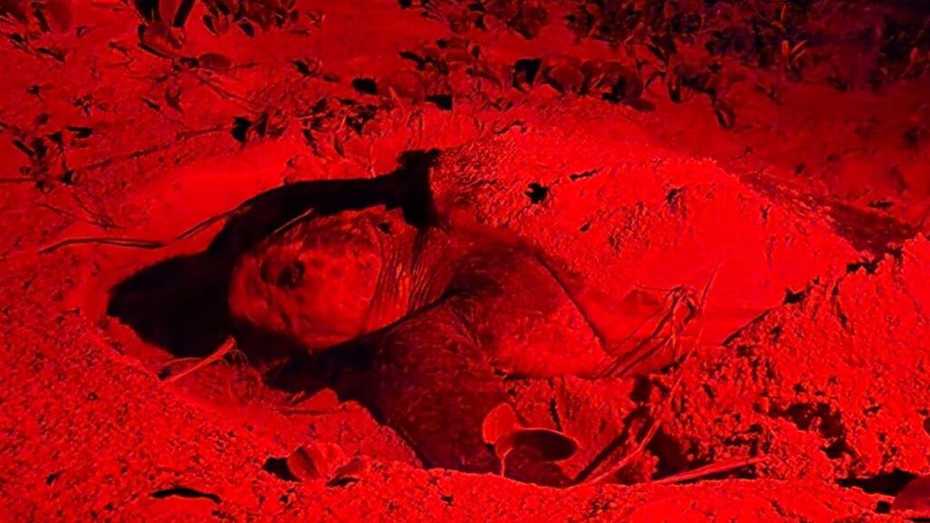Turtle Tracking in Kosi
It is night, the sky a velvet cloak of forever stars. An almost full moon ripens and makes the sand glisten. Our torches are off as the moon sheds an even light across the beach and lengthens our shadows. Waves break in white froth like wild horses pounding.
I’m barefoot on a beach in Kosi Bay, the northern most part of KwaZulu-Natal bordering Mozambique, with a group of walkers and a guide searching for signs of newly-hatched turtles. In hushed voices we walk and chat, hyper aware of our pristine Kosi Bay surroundings. I kick up the sand and marvel at the bioluminescent phytoplankton flashing in blues and greens like sparklers on a birthday cake.
We’re on a five day walking tour of the area that will take us through coastal forest, across lakes and over beaches. It is also turtle season when loggerhead and leatherback baby turtles hatch and make their way to the ocean near Bhanga Nek. Each year between November and early March, female turtles make their way back to their native beach to nest.
We are all hoping to spot something and then we see them: tiny tyre-like tracks on the sand where turtles have crawled to the water. A few steps ahead our guide Patrick kneels down and points his torch, on the infrared setting, to something.
It’s a loggerhead turtle that has broken through its shell and climbed out of its sandy nest. Crabs, hundreds of them, scurry around the turtle trying to nip a piece of flesh. It is survival of the fittest, the strongest, and the biggest in numbers. “The crabs already got to it,” Patrick says in a resigned voice. “Look how slowly it’s moving.”
We are all rooting for the turtle, willing it to reach the water, but midway it halts, its throat throbbing quickly with the effort of breathing. We move away and let it be, in the knowledge that out of five hundred eggs perhaps only two survive to become fully grown.
Further along the Bhanga Nek beach we encounter two feisty loggerhead turtles, the size of a child’s hand, making a beeline for the ocean. Our spirits renewed we watch, silent and awestruck, as their clumsy movements on the sand turn to the most graceful of swimming in the water where they disappear into the waves.
Back where we started, we put on our flipflops and retrace our steps into the lush Bhanga Nek forest alive with night sounds and clamber onto the back of a bakkie. Holding tight and looking up at the canopy of trees we head back to Amangwane Camp, our base for the trip. At the camp we commune around the crackling fire, drinks in hand, smiling and chatting about the immense gift of having witnessed part of a turtle’s lifecycle. It starts to rain and, untangling ourselves from conversations, we make our way to our rooms at our Kosi bay accommodation, which are spartan, comfortable and en suite.
Spekboom Tours and Active Escapes offer bespoke hiking in the Kosi Bay lakes as well annual turtle tracking slackpacking tours. Book now for the short turtle nesting season of December to March. Only a few places left for 2025 !





